Physical Address
304 North Cardinal St.
Dorchester Center, MA 02124
Physical Address
304 North Cardinal St.
Dorchester Center, MA 02124

Every so often during his tenure as mayor of New York, Michael Bloomberg tried to push through congestion pricing, in which drivers would have to pay to use city streets in Midtown and Lower Manhattan. That’s a popular solution to chronic overcrowding but, like drinking coffee to try to cure a hang over, it doesn’t really get to the heart of the matter. More intervention usually doesn’t solve the problems that were themselves the result of a prior intervention. Let me explain. In 2011, I had the opportunity to participate in an online discussion over at Cato Unbound. It focused on Donald Shoup’s book The High Cost of Free Parking, which looks at the consequences of not charging for curbside parking. If you’ve ever tried to find a parking spot on the street in a big city, especially on weekdays, you know how irritating and time-consuming it can be. It may not top your list of major social problems, except perhaps when you’re actually trying to do it. In fact, according to Shoup about 30 percent of all cars in congested traffic are just looking for a place to park. The problem though is not so much that there are too many cars, but that street parking is “free.” Except, of course, it isn’t free. What people mean when they say that some scarce commodity is free is that it’s priced at zero. Some cities, such as London, Mayor Bloomberg’s inspiration, charge for entering certain zones during business hours — with some success. (As well as unintended consequences: People living in priced zones pay much less for parking and higher demand has driven central London’s real-estate prices, already sky high, even higher). But this doesn’t really address what may be the main source of the problem: the price doesn’t […]

My guest this week is Anthony Ling. Anthony is founder and editor of Caos Planejado, a Brazilian website on cities and urban planning. He also founded Bora, a transportation technology startup and is currently an MBA candidate at Stanford University. He graduated Architecture and Urban Planning at Universidade Federal do Rio Grande do Sul and worked with Isay Weinfeld early in his career. Read more about the ideas discussed in this week’s episode: Be sure to check out Caos Planejado. Whether Portuguese is your native language or you’re interested in Brazilian urban planning issues, it’s a fantastic resource. Learn more about the emergent order of informal favela development. Everyone interested in urban planning should, at the very lease, read the Wikipedia article on Brasilia. Learn more about on-demand transit. Help spread the word! If you are enjoying the podcast, please subscribe and rate us on your favorite podcasting platform. Find us on iTunes, PlayerFM, Pocket Casts, Stitcher, and Soundcloud. Our theme music is “Origami” by Graham Bole, hosted on the Free Music Archive.
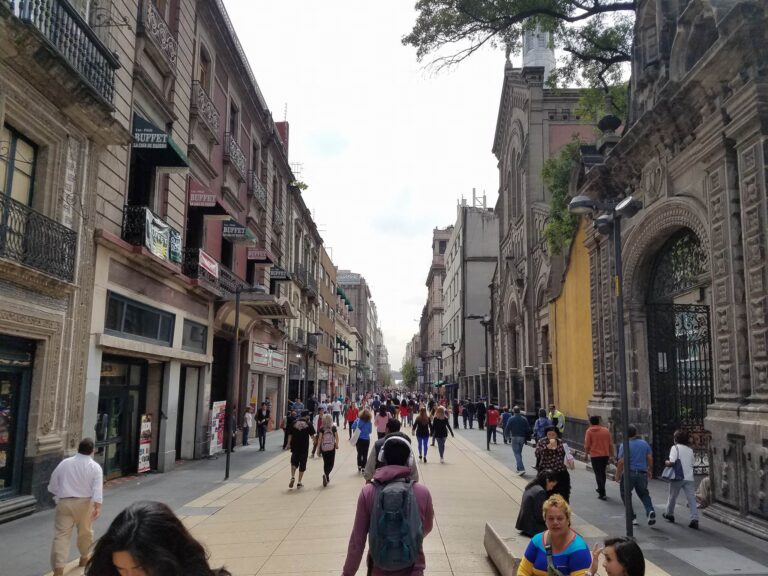
This piece was coauthored by Nolan Gray and Katarina Hall. It’s like Los Angeles, but worse. To many, that’s the mental image of Mexico City: a city of unending traffic, unbearable smog, and unrestrained horizontal expansion. Yet when one walks the streets of Mexico City, a distinct reality comes into view: a city of wide sidewalks and integrated bike lanes, lush parks and cool street tree canopies, and dense, mixed-use urban neighborhoods. As a matter of fact, nearly every neighborhood within Mexico City’s giant ring road—the Circuito Interior—has a walkscore above 95. Many major U.S. cities lack even one neighborhood with such a high score. Even on the outer fringe of Mexico’s sprawling Distrito Federal, neighborhoods often have walkscores upwards of 70, qualifying as “very walkable.” What makes Mexico City so walkable? The first thing an American might notice about Mexico City is just how busy the city’s sidewalks are. It’s a city of 21,339,781, and it shows. But this busyness isn’t a mere side-effect of size; it’s a natural result of the city’s generous sidewalks and high-quality pedestrian infrastructure. Many downtown roads host spacious sidewalks, accommodating an unending sidewalk ballet of commuters, tourists, and street vendors. Wide medians along major boulevards offer both refuge for crossing pedestrians and a public space in which people are encouraged to meet and relax. Many of the city’s busiest downtown areas have been closed to automobile traffic. Mexico City’s main road—Paseo de la Reforma—is reserved on Sundays for pedestrians and cyclists. “Jaywalking” is normal and in many cases is assisted by traffic police—a stark contrast to the near persecution pedestrians often face in U.S. cities. The ample space for pedestrians attracts not only foot traffic but also the people watchers who come to enjoy the vitality, in turn keeping many downtown […]
In America, there is an almost stifling consensus among pro-urban types—trains are good, trains are right, trains work. Trains have marked the upward surge of mankind—trains clarify and capture the essence of the American spirit. “Just look at Europe!” Yes, let’s look at Europe. What you’ll find is a startling change—Europeans are embracing the conventional coach bus for trips once exclusively the province of trains and private automobiles. The Economist has called it a ‘Revolution on Wheels.’ The consultancy Oliver Wyman titled their report ‘Hit by a Bus: European Rail.’ Why did this happen? Trains were supposed to be the future, and buses a shoddy relic of the past. Up until a few years ago, it was illegal to run intercity buses in Germany and France, among others, to protect their state-owned train system from competition. When Germany relaxed this ban in early 2013, suddenly a host of newcomers sprang up to serve the demand for travel between cities. By year’s end, weekly bus journeys in Germany had increased by 230%. The industry went through a cycle of intense competition between several players, followed by consolidation into a few big rivals. Just this summer, the biggest player in Germany, Flixbus, acquired the continental operations of Megabus, a big player in the United States, as well as domestic operations by Germany’s Postbus. During the summer of 2015, France followed with its own deregulation to allow intercity buses. The Economist writes that “France had only 100,000 intercity coach passengers in all of 2014, but saw 250,000 in the single month from mid-August.” Italy, Sweden and Finland have also deregulated their markets in recent years. Buses have one premier appeal—they are cheap. For the 140-mile trip I took this weekend from Brussels to Cologne, tickets were $10, while a train ride was $44. Browsing […]
This month marks the 100th anniversary of two pieces of legislation that revolutionized the way we live. On July 11, 1916, President Woodrow Wilson signed the first Federal Aid Road Bill. And on July 25, 1916–exactly 100 years ago today–New York City passed the country’s first comprehensive zoning ordinance. Prior to 1916, transportation infrastructure was primarily a local and/or private responsibility. For example, cities leased their rights-of-way to trolley companies, which operated transit lines. Railroad companies provided travel service between cities. The 1916 Federal Road Bill was the first step in nationalizing transportation infrastructure funding, with the state highway departments formed to manage federal appropriations for roads. These two pieces of legislation produced radical change, as government favoritism of automotive infrastructure crowded out other transportation modes and undermined innovation. In the century prior to 1916, entrepreneurs invented steam ferries, trains, bicycles, trolleys, and automobiles. Such advances ceased after 1916. Yes, today’s cars are more comfortable and powerful, but they have the same steering wheel, four tires, and internal combustion engine as the Model-T Henry Ford was building 100 years ago. As for roads, the main difference is they are bigger. Unable to compete with government favored automobiles, Charleston’s last private ferry operator closed shop in 1930. Its trolley lines, which carried 20 million passengers/year (compared with CARTA’s 5 million/year) stopped running in 1937. Zoning is segregation – not only of land uses deemed incompatible, but of people deemed “undesirable.” Progressives behind New York City’s 1916 zoning ordinance regarded immigrants moving into northern cities from Europe and the South as “undesirable.” In 1921, then U.S. Secretary of Commerce Herbert Hoover tapped Edward Bassett, the leading advocate of New York City’s 1916 zoning, to create a model zoning ordinance. Engineer Morris Knowles also served on this committee. In its 1926 landmark decision in Euclid v. […]
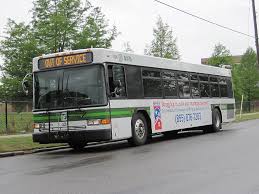
Every form of transportation has some unique considerations. Car drivers worry a great deal about parking near their destination–a consideration bus riders don’t need to think about. But, as transit consultant Jarrett Walker has written about, some considerations are universal. As Uber and Lyft have added carpool services, some people have noted that they can learn from traditional transit: https://twitter.com/jacksmithiv/status/635925087640793088 But what lessons go in the opposite direction? What can transit learn from Uber? LESSON 1: PAYMENT CONVENIENCE MATTERS When you get in an Uber, you don’t pay fare like you do on a bus. You just start moving. When you reach your destination, you don’t fumble for cash and wait for change like you do in a taxi. You just get out. This may seem like a small detail, but Uber riders frequently cite this convenience as giving the service a magical feeling. For the driver, the less time she spends accepting payment, the more time she can spend getting people around. Buses too can use off-board payment systems to relieve passengers of the headache of fumbling for their fare and waiting on 50 other passengers to each find and pay exact change. Typically, passengers get a proof of payment and fare inspectors will check a fraction of rides, much like meter inspectors check a fraction of parking meters. LESSON 2: THERE’S NO SUCH THING AS ENOUGH CUTTING WAIT TIMES With much fanfare, Austin introduced bus services that come every 15 minutes at peak times and every 20 minutes off-peak. For Uber, by contrast, a passenger waiting 15 minutes for service is considered a failure. Downtown pickup frequency was often under 3 minutes and even then, Uber still worked hard to cut wait times down. The company endures a huge amount of negative media and customer sentiment for “surge pricing,” all to make sure that whenever and wherever a passenger requests a car, one will show up in a couple minutes. At $1.25 to $2.50 per ride and […]
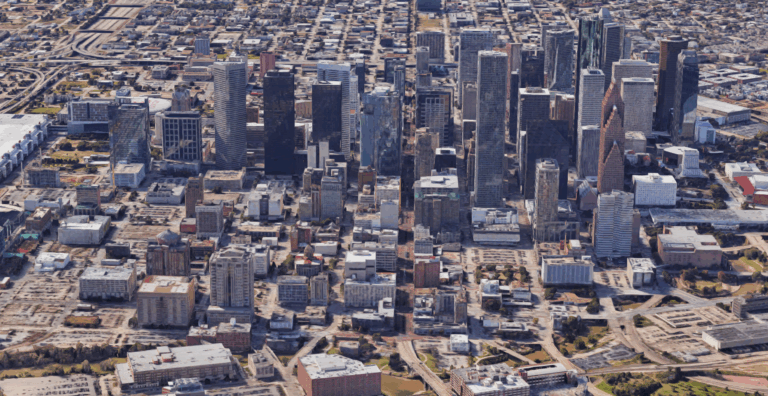
A metropolitan economy, if it is working well, is constantly transforming many poor people into middle-class people, many illiterates into skilled people, many greenhorns into competent citizens. … Cities don’t lure the middle class. They create it. – Jane Jacobs, The Death and Life of Great American Cities If you follow urban issues in the press, you might be forgiven for thinking that there are only three cities in America: San Francisco, New York, and Portland. All three are victims of their own success, as rising demand for housing has increased rents to unsustainable levels. Despite their best efforts, from rent control to inclusionary zoning mandates, middle- and lower-class households are increasingly forced to leave these cities as each progressively transforms into a playground of the rich. Yet there is a fourth city, a city which must not be named except to be derided as a sprawling, suburban hellscape. This fourth city has managed to balance a booming economy, explosive population growth, and affordable housing. This city has—as cities have for thousands of years—steadily grown denser, more walkable, and more attractive to low-income migrants seeking opportunity. This city is Houston, and it’s well past time for her to come out of the shadows. Explosive Economic Growth, Booming Population, Functioning Housing Market Before jumping into the nitty-gritty of how Houston has handled explosive growth in the demand for housing, it is worth first getting a handle on the magnitude of the challenge facing the city. When many people think of the Houston economy, they understandably think of large energy companies. Indeed, energy companies dominated Houston’s economy for much of the last century and continue to play a major role today. But in the years following the 1980s oil glut, Houston’s economy has been diversified in large part by startups and emerging small […]
Brussels, Belgium–I had recently moved from Los Angeles, my home of twenty years, to Brussels. It would be my first time living in a traditional city since becoming interested in urban design. So I was constantly looking for little urban insights and pleasures on the ground. For instance, I immediately noticed that housing prices here are roughly half of what I encountered in Los Angeles. Within a few weeks of my arrival, the bombings of Brussels occurred. The atrocity raises some interesting questions in regards to urbanism—are there certain urban designs that can prevent or discourage terrorism? Should the threat of terrorism influence the design of our cities? How would it? While terrorism may leave us shocked and breathless, it’s worth remembering that traffic deaths greatly outnumber deaths due to terrorism. In sheer numbers of lives lost and saved, cars are the bigger culprit. Terrorism, for its part, exacts a great toll paid in fear as well as loss of life and limb. What makes a city resilient in the face of terrorism? Walking The more ways one can move about the city, the more resilient it will be in the face of crisis. But, these options are not equal; cars are big compared to the space available for them—if everyone were to drive, no one would move. Here, man in his humblest form is king—we are always ready to walk, several miles if need be, without the aid of any special operator or infrastructure. Density and proximity ensure walking home is a reasonable or even routine affair. Walking loses its appeal, however, as travel distances increase, especially for the less physically able among us. And as much as walkability is ideal, many cities are just not suited for it, in their current state. Work is too far to reach via […]
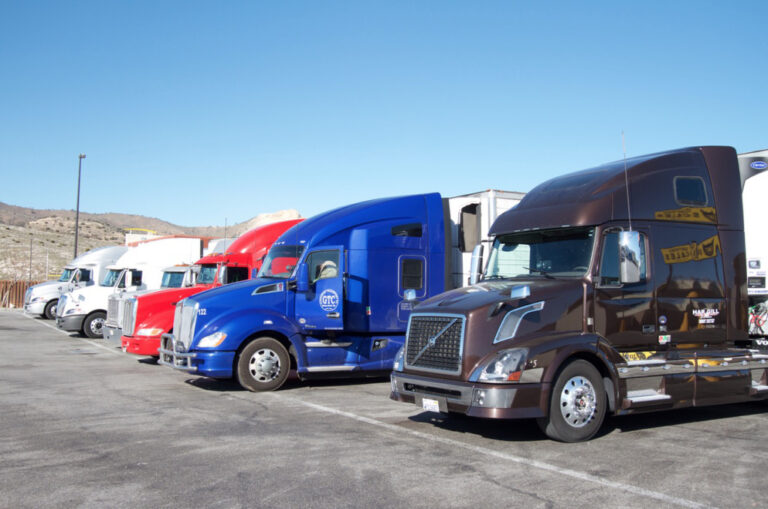
A recent trip to the tax attorney’s office put me in close proximity to a fellow client as we waited. This guy was one of the lead developers of autonomous vehicles so I picked his brain for a while. He said his company is on track to have products on the road in four or five years. Here’s a little heads up for those of you who think you know how driver-less cars will play out in the culture and economy. The first commercial adopters of this technology (other than the military) will be fleets of long haul trucks. The big box retailers have already calculated the savings on labor and fuel efficiency as well as just-in-time delivery optimization with vehicles that aren’t burdened by humans. . Uber and other taxi services have already announced their desire to convert to driverless cars in an attempt to improve service and lower costs. Car sharing services may convert to the on demand driverless taxi model as well. The U-Haul folks will eventually morph with the storage pod pick up and delivery services that are already in operation. Municipal governments hemorrhaging cash for salaries, health insurance, and pension costs will find it irresistible to phase out humans for sanitation vehicles. When I was a kid there were three men (and they were, in fact, always men) on each truck. Today there’s one person with a video camera and a robotic arm collecting the trash. Soon the truck and the robot arm won’t need a human at all. We can expect the same trajectory for mail carriers, utility meter readers, and other such activities. City buses will eventually see the end of human drivers, particularly as dedicated bus lanes and BRT come to dominate the surviving transit systems. In many suburban locations public buses may […]
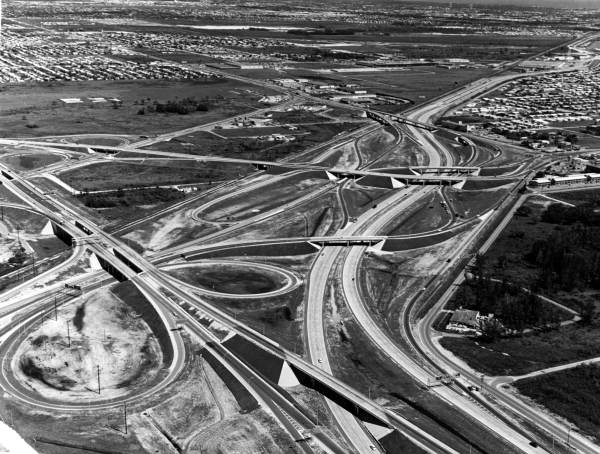
Surprise!! I’ve had the intent to wrap-up the Rothbard The Urbanist series for a long time, and it’s been sitting on my todo list for over 6 years. I want to thank Jeffrey Tucker, then at mises.org, and now at FEE.org and liberty.me for enthusiastically granting permission to reprint excerpts from For A New Liberty. Murray Rothbard’s 1973 classic can be downloaded free from Mises.org as pdf, and audio book read by Jeff Riggenbach. This chapter is also discussed by Bryan Caplan as part of an econlog book club series on For A New Liberty. It’s been a while, so you may want to catch up on the first six posts: Rothbard the Urbanist Part 1: Public Education’s Role in Sprawl and Exclusion Rothbard the Urbanist Part 2: Safe Streets Rothbard the Urbanist Part 3: Prevention of Blockades Rothbard the Urbanist Part 4: Policing Rothbard the Urbanist Part 5: Diversity and Discrimination Rothbard The Urbanist Part 6: Traffic Control We pick up in the heart of chapter 11: “The Public Sector, II: Streets and Roads” to expand on a subject core to Market Urbanism: the pricing of highways, and the consequences of a system where politics, special interests, and top-down planning have incarnated a dysfunctional system severely disconnected with bottom-up pricing signals necessary to be sustainable. Tragically, Rothbard’s insights on these subjects have been mostly neglected for over 30 years, while apologists for sprawl and automobile dominance have nearly monopolized the conversation among free-market advocates. We begin the section with Professor Rothbard’s acknowledgement of what sprawl apologists turn a blind eye to, yet urbanists on the left are keenly aware. Government intervention, fueled by special interests and old-fashioned progressive ideology, massively subsidized the highway system and crowded-out otherwise viable railroads. As a result, we have an overbuilt highway system, urban neighborhoods were eviscerated, suburbs spread far-and-wide, privately […]